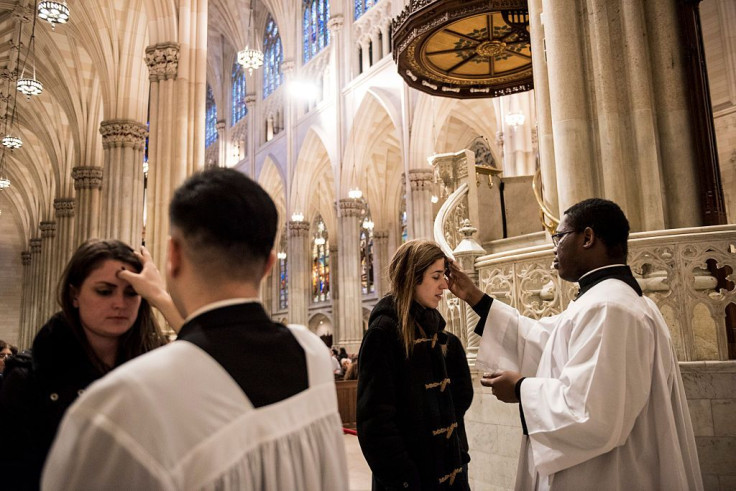Ash Wednesday 2021 Meaning: Why Do People Have A Cross On Their Forehead?
KEY POINTS
- Ash Wednesday marks the start of Lent
- The ash crosses usually seen on observers' foreheads are meant to represent mortality and penance for their sins
- The practice is said to have begun around the 8th to 10th century
Ash Wednesday, observed on Feb. 17 this year, marks the start of Lent in the Christian calendar. It always falls on the Wednesday six and a half weeks before Easter and is seen as a day of penitential prayer and reflection.
It is common to see Christians with ash crosses on their foreheads on Ash Wednesday. But what exactly does it mean?
The marking represents mortality and penance for the observer's sins, according to National Geographic. Burned palm leaves from the previous year’s Palm Sunday, which commemorates the day Jesus arrived in Jerusalem, are used to create the ash that priests use to draw crosses on foreheads during a morning mass.
The Christian belief that people must repent for their sins has long been established, but it was only around the 8th to 10th century when the practice of placing ashes on the heads of observers on Ash Wednesday began, according to Britannica.
The custom of ashes on the head is attributed to Pope Gregory I the Great (circa 540-604 A.D.), who was among the first to accompany the ceremonious act with a saying that translates to: "Remember that you come from dust and that to dust you will return.”
The saying acts as a reminder for people to become aware of their mortality and that it is only through God that they can achieve eternal life. Today, however, priests utter a shorter saying, which goes: “Repent, and believe in the Gospel.”
Today, the Church regards Ash Wednesday as a day for people to repent and come back to God. Fasting and abstinence are considered to be obligatory as it is believed that when certain bodily comforts are set aside, people will then be able to settle into an attitude of penitence.
Originally, Christians were allowed only one meal a day during the entire 40-day period of Lent, with fish and meat being banned from the menu. The Roman Catholics relaxed this tradition around World War II, and nowadays, the obligatory days of fasting and abstinence are only Ash Wednesday and Good Friday.
Devout Christians observing Lent only eat one full meal and two smaller portions of food that "must not equal the size of one full meal" on Ash Wednesday, according to AboutCatholics.com.
Although Ash Wednesday is not a holy day of obligation, it is one of the most heavily attended non-Sunday masses. Worship services are held on this particular day, with Anglican, Lutheran and other Protestant churches also taking part in the solemn event.

© Copyright IBTimes 2025. All rights reserved.





















